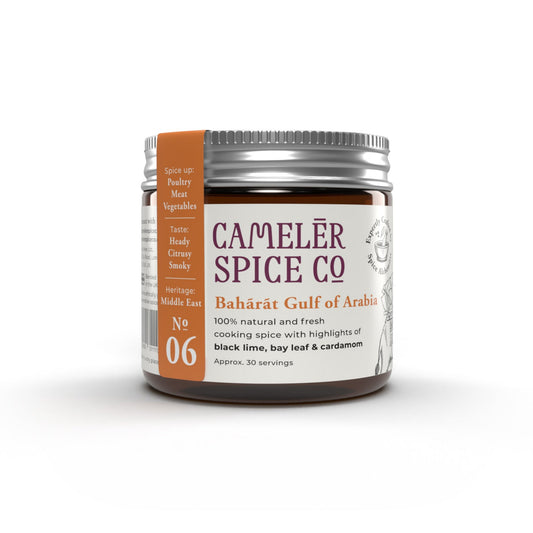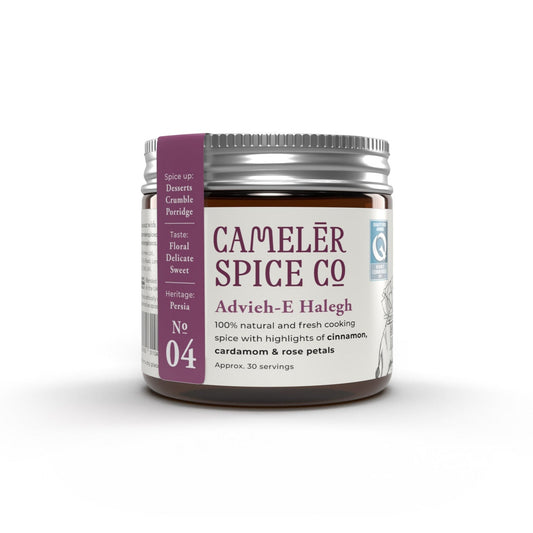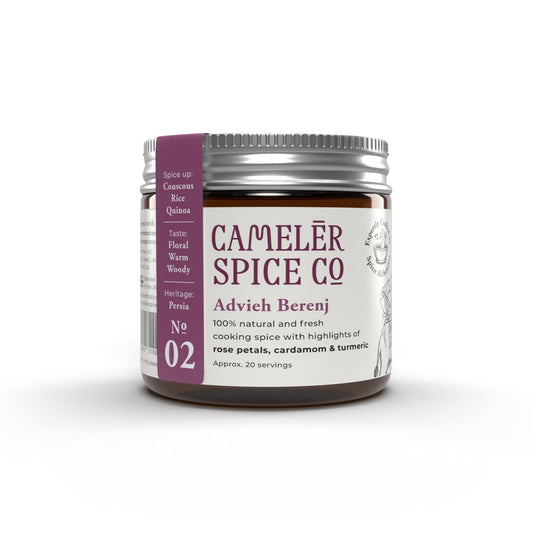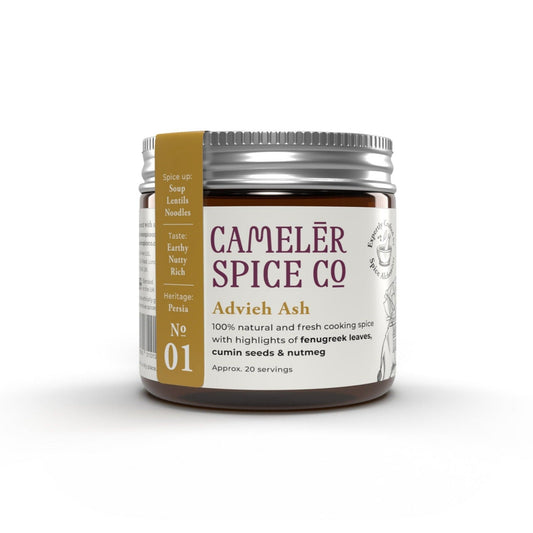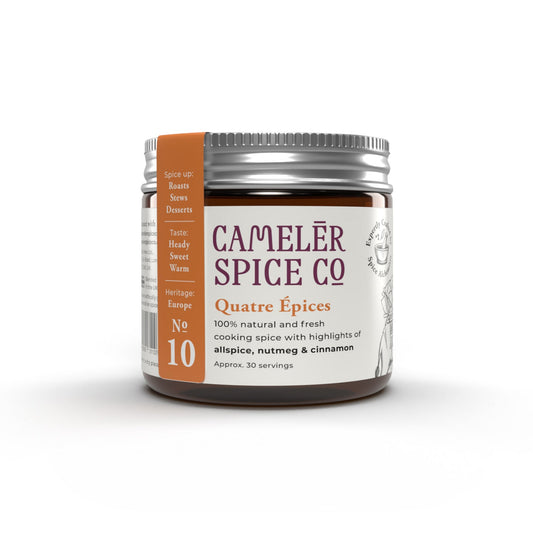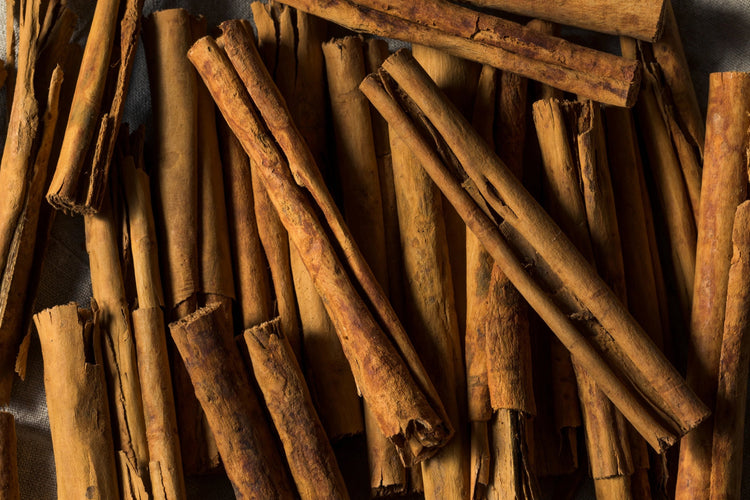
Collection: Cinnamon
(Also known as Ceylon, Cassia bark and "true" cinnamon)
What does cinnamon taste like?
Cinnamon is marketed as brown, curled sticks or as a deep brown powder. It has sweet, aromatic and warm notes. While it's most common in desserts such as oatmeal raisin cookies and apple sauce, cinnamon also adds a delightful warmth to savoury dishes. Cinnamon doesn't taste sweet, but it does enhance the perception of sweetness in other ingredients. To give flavours time to permeate in a dish, always add cinnamon at the earliest opportunity.
What flavours go with cinnamon?
- Almond
- Allspice
- Anise
- Apple
- Apricot
- Banana
- Blueberry
- Butternut Squash
- Cardamom
- Carrot
- Cherry
- Chocolate
- Cloves
- Coconut
- Coffee
- Fig
- Ginger
- Grapefruit
- Lime
- Mint
- Nutmeg
- Orange
- Peanut
- Pear
- Pineapple
- Strawberry
- Thyme
- Tomato
- Walnut
- Watermelon
If you haven't tried our 17th-century AD French blend Quatre Epices, you are in for a treat. This is a blend that epitomizes alchemy. A quadruplet of allspice, cinnamon, cloves and nutmeg. Woody and warming this is a sublime all-purpose seasoning. Together they all share similar profile notes.
What are the health benefits of cinnamon?
Cinnamon is a superb source of manganese and a very good source of fibre, iron and calcium. It is important to ground cinnamon in small batches to protect the quality. Cinnamon displays antifungal and antibacterial properties. Furthermore, the antioxidants in cinnamon are known to contain anti-inflammatory properties. Its probiotic properties may promote healthy gut health.
What are interesting facts about cinnamon?
- The ancient Egyptians used cinnamon as incense and for body embalming from 1600 BC.
- The Arabs were known to invent tall stories about cinnamon to protect the unknown source whilst commanding a high price. In one such folklore, giant birds collected the cinnamon bark from an unknown origin and built nests on cliff tops.
- In the 16th Century, the Portuguese realised cinnamon trees were growing in Sri Lanka and promptly took control of the source. Consequently, they were ousted by the Dutch and eventually fought the British for centuries to control this valuable trade.
- If you are indigenous to Denmark, you will know that your friends and family will cover you in cinnamon if you are not married by twenty-five. The tradition dates back centuries when spice salesmen would travel around but never remain in one place long enough to settle down. Many of these salesmen would never find a partner, incredibly the man would be known as "Pebersvends", meaning Pepper Dudes, and women would be known as "Pebermo" Pepper Maids.
What is the chief flavour compound of cinnamon?
Cinnamaldehyde: (spicy, woody and dry) This flavour compound is sensed by the receptors on our tongues. Its warming properties complement other warming spices. Cumin respects cinnamon with its earth and warming flavour profile.
Shop Spices With Cinnamon
-

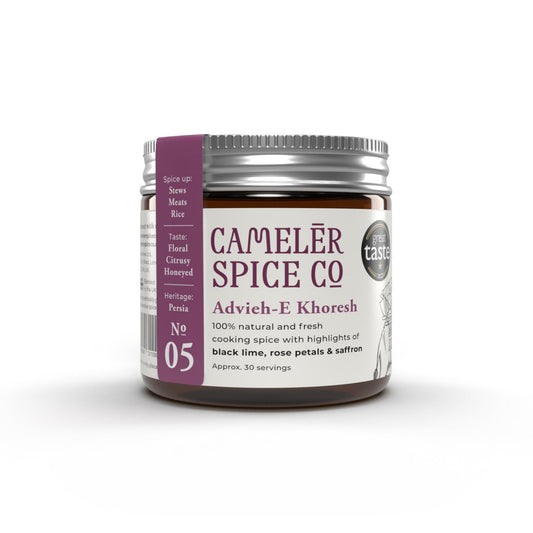 Sold out
Sold outAdvieh-E Khoresh
Regular price £8.95 GBPRegular priceUnit price / per -
Baharat Gulf Of Arabia
Regular price £8.95 GBPRegular priceUnit price / per -
Advieh-E Halegh
Regular price £8.95 GBPRegular priceUnit price / per -
Advieh Berenj
Regular price £8.95 GBPRegular priceUnit price / per -
Advieh Ash
Regular price £8.95 GBPRegular priceUnit price / per -
Quatre Epices
Regular price £8.95 GBPRegular priceUnit price / per




